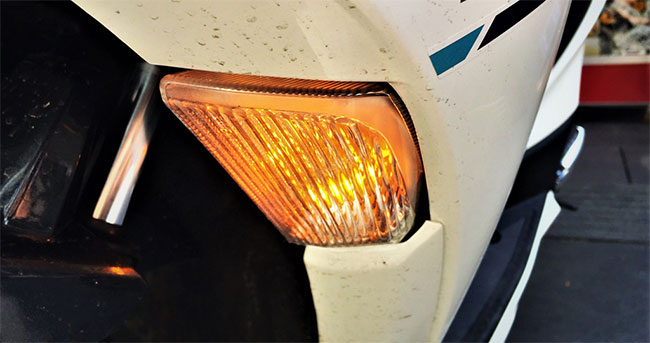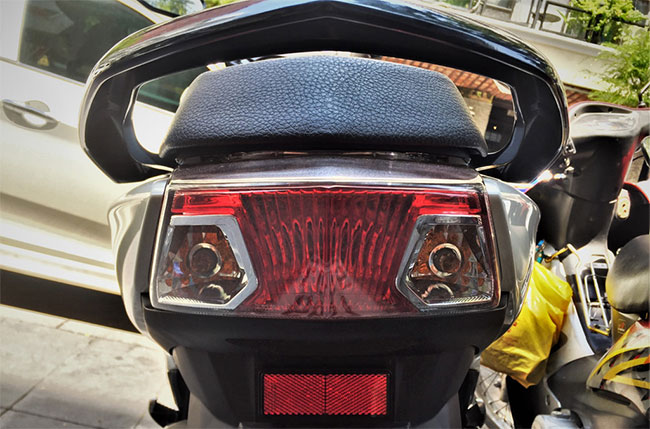Why is the turn signal light orange?
In 1938, the patent for the turn signal was officially granted, immediately the car and motorbike manufacturers equipped this system on their vehicles. At first, the turn signals are white in the front and red in the back.

Amber yellow has a more sensitive wavelength that is more sensitive to the brain than other colors, making it easier to recognize at a distance.
Until 1963, cars in the United States were forced to use orange as the turn signal today, and gradually other countries around the globe were like America. So why orange is used as the color of turn signals and not other colors, let's find the answer to this problem.
In fact, the orange that people often call has the right name is yellow amber (Amber color) . The reason most turn signals with this color are based on studies by American experts in 1990. These experts believe that the wavelength of amber (592nm) is more sensitive to the human brain than any color. any other color.

Turn signals located in the same luminaire as the taillights are usually amber colored to avoid confusion with the taillights.
In Vietnam, the Ministry of Transport has a regulation that turn signals must have amber or red light. However, for vehicles with turn signals and taillights placed close to each other, users should not install red turn signals to limit the situation that the rear vehicles are confused with taillights and turn signals.
Also according to the regulations of the Ministry of Transport, the turn signal light must have a flashing frequency (flashing) in the range of 60-120 times / minute, the lighting surface area of each turn signal should not be less than 7cm square. Therefore, the regime of turn button shirt light may violate the law.

Turn signals with lighting surfaces smaller than 7cm square are not eligible for circulation in Vietnam.
Penalties for installing and using equipment against the manufacturer's designs based on Point c, Clause 4, Article 30 of Decree 46/2016 / ND-CP:
A fine of from VND 800,000 to VND 2 million shall be imposed on owners of motorcycles, motorbikes and similar vehicles that arbitrarily change their frame, engine, shape, size, and characteristics.
- What color is the turn signal light? It's easy to think but 90% of people answer wrong
- The piece of orange orange turned purple after only one night, the scientific community did not understand why
- Why does the sky turn red at sunset?
- Turn orange peel into fuel and antimicrobial agent
- Smart roadside recognizes the car to turn on the green light
- You will never want to turn on the light again if you know this truth
- Ghost physics: Signal faster than light
- When you turn off the light in the room, where did the light go?
- Extraordinary orange snow in Russia
- Harm of artificial light
- How to add super fast orange
- Remember this orange mystery? We finally got the answer!
 'Fine laughs' - Scary and painful torture in ancient times
'Fine laughs' - Scary and painful torture in ancient times The sequence of numbers 142857 of the Egyptian pyramids is known as the strangest number in the world - Why?
The sequence of numbers 142857 of the Egyptian pyramids is known as the strangest number in the world - Why? History of the iron
History of the iron What is alum?
What is alum?